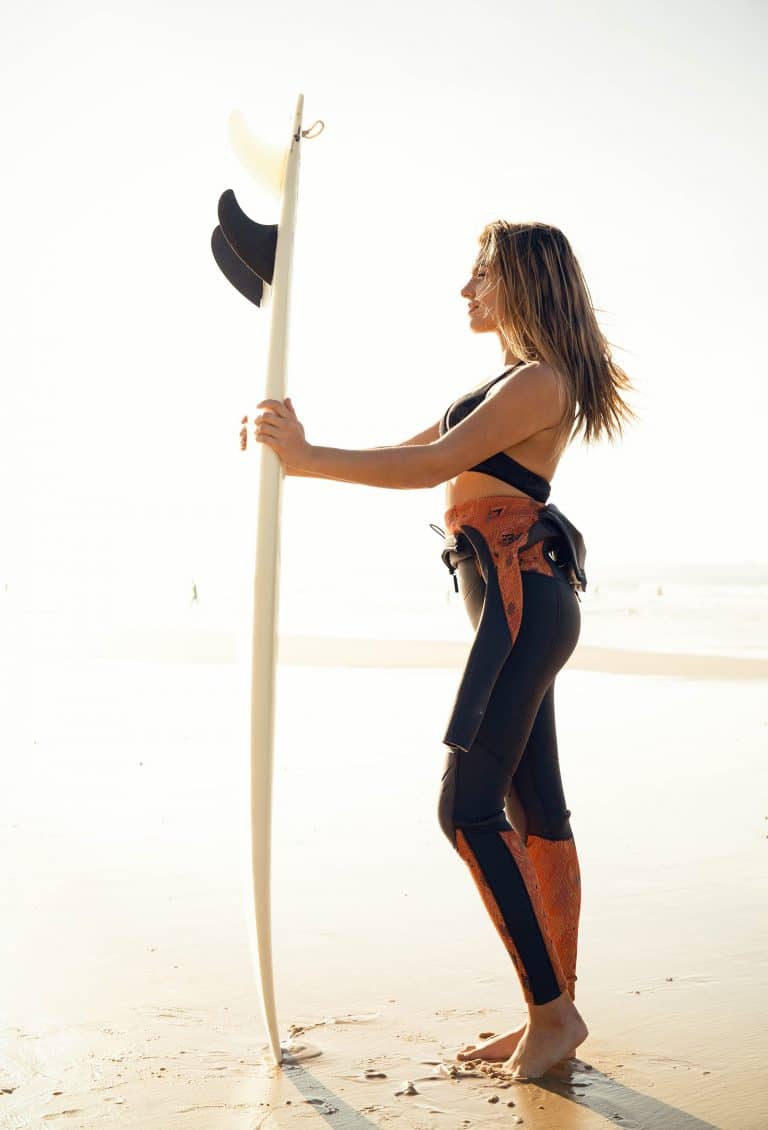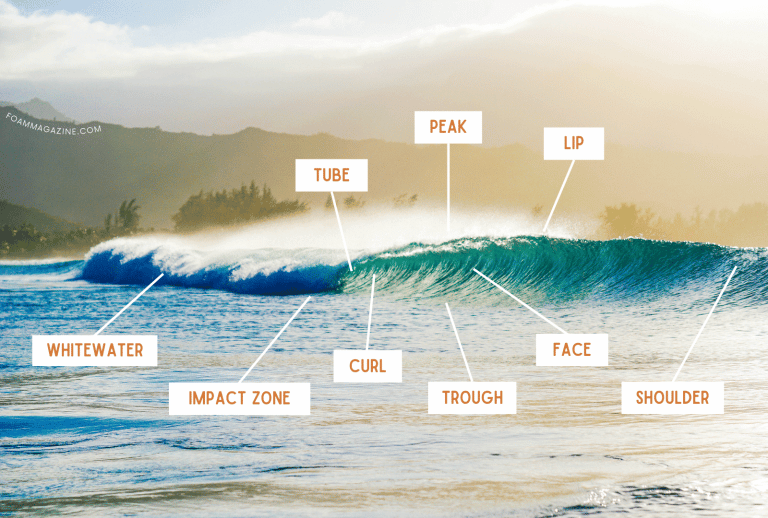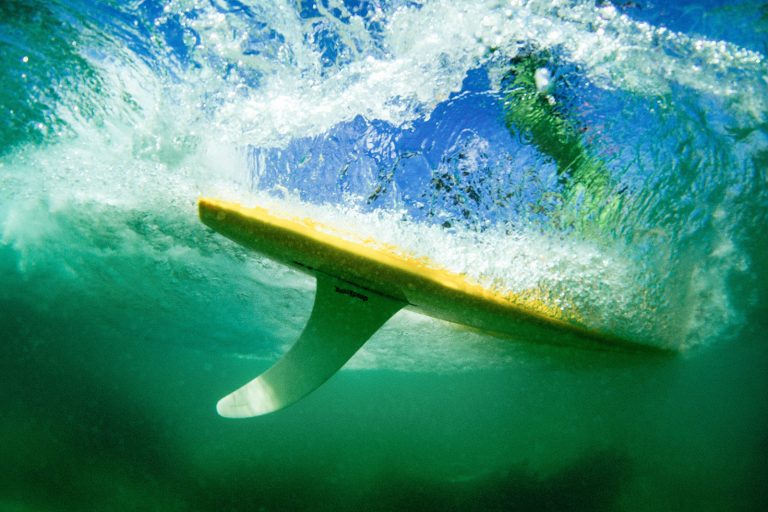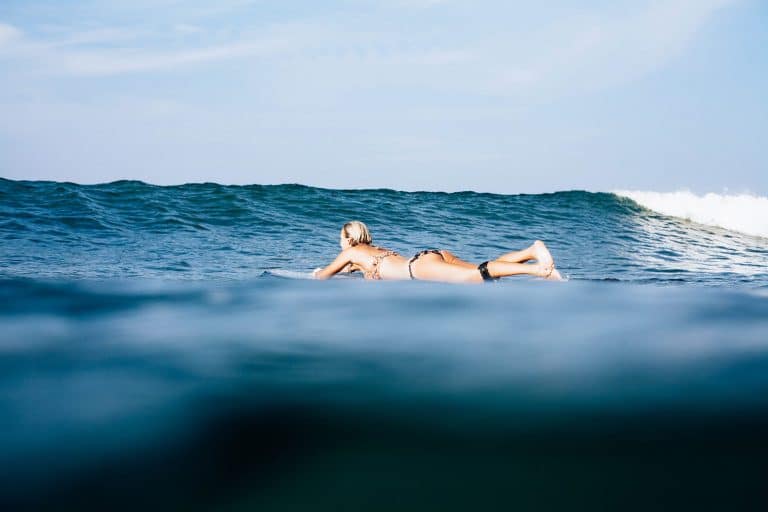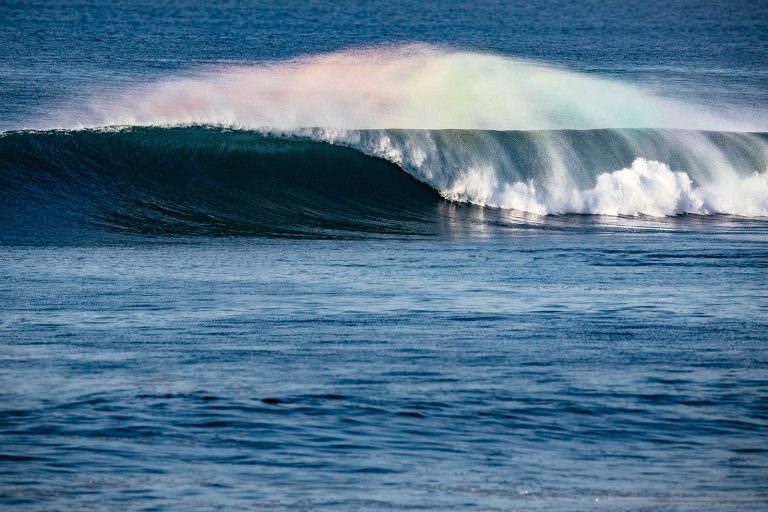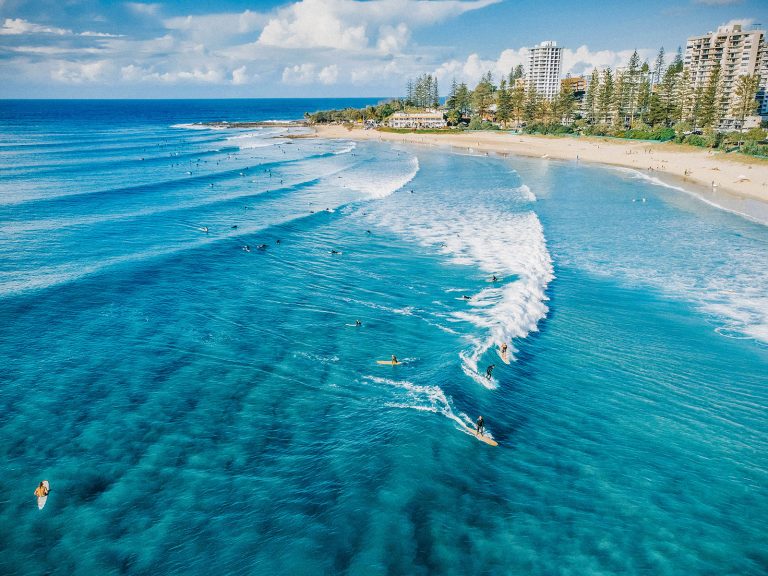The Best Size Surfboard Leash to Get for Your Board
Sizing a surfboard leash is actually quite simple. You never want the leash to be shorter than your board, so the quick answer to what size leash you should get is: the same or a little longer than your board.
These are my favorite surfboard leashes for everyday surfing.
But there’s more to choosing a surfboard leash than just the length, so let’s explore the different types of leashes you might find when you’re shopping and what they’re used for.
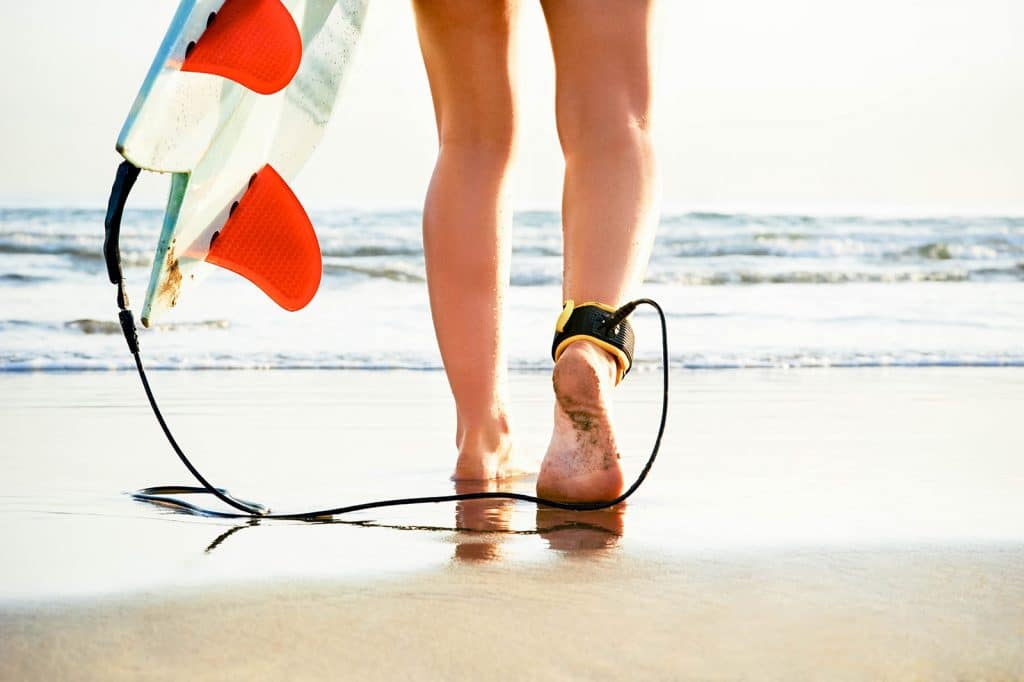
Different types of surfboard leashes explained
Leashes (also called leg ropes) come categorized as competition (comp) leashes, pro leashes, regular leashes, longboard (calf) leashes, and big wave leashes.
The category is determined by the thickness (in millimeters) of the plastic cord, and what you ultimately choose will depend on your skill level and the types of waves you’re riding.
Competition (comp) leash
When every tenths of a point can make or break your competitive surfing career, it’s crucial for every piece of gear you own (including your surfboard leash) to be as streamlined and optimized as possible.
A comp leash is designed for smaller wave, high-performance surfing. It’s only 5mm thick to prevent the leash from dragging during big airs or turns. But, you don’t have to be entering contests to appreciate a thin, lightweight leash; many surfers prefer the “almost not there” feel of a comp leash, so long as they’re just playing around in smaller waves.
Once the waves get bigger and more powerful, however, it’s a good idea to use a different (thicker) leash to reduce the chances of your leash breaking when you’re separated from your board.
Pro leash
Pro leashes were designed for competitive surfers riding bigger waves. They’re thin and unobtrusive like comp leashes, but are typically 6mm thick to give surfers a bit more reliability in gnarlier conditions.
If you ride a larger board with more volume, a pro leash is a safer bet as it holds up better against the greater tension of a wave tugging and pulling on your extra buoyant board.
Regular (all around) leash
For most people who are not throwing massive buckets of water in the air (you know, us regular folks), regular leashes are a solid choice because the drag from the leash won’t really affect performance (nor would you even notice it when slashing intermediate-style turns).
This all-around leash is 6mm to 7mm thick, which is perfect for keeping on your board year-round in nearly any swell condition except for XL. Even more advanced surfers will swap their pro leashes for regular leashes when the waves get beefy.
Longboard (calf) leash
Longboards require long leashes, and stylish longboarders who love to cross-step up and down their boards prefer leashes attached to their upper calf (right below the knee). This placement helps you get a good noseride in without tripping over your leash and getting tangled up in the line.
A calf leash is fairly thick (about 7mm) to provide strength against the intensity and volume of a longboard.
Big-wave wave leash
Big-wave leashes are big everywhere: at least 8mm thick with bomber construction (from the ankle strap to the cord) and extra long lengths so you can dive deep to get away from your surfboard before it pelts you. Big-wave leashes also have quick-release safety clips to make death-defying surfing a little less hairy.
If you’re not surfing triple overhead waves or appearing on the cover of Surfer magazine, this type of leash is totally overkill.
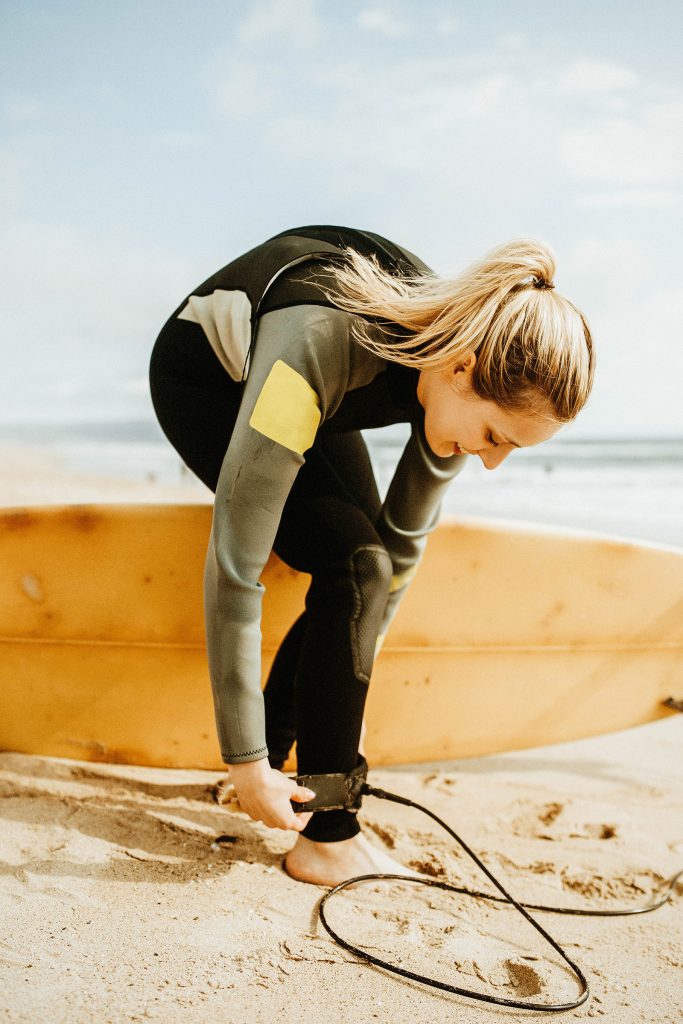
What length surfboard leash to get
A surfboard leash should be the same length as your board, if not slightly longer.
For longboards in particular, you don’t want a leash that’s too long because it’ll take you longer to reel in your board. If you’re riding a 9′ board with a 10′ leash and you fall off, your board is dangerously flopping around in the whitewash, creating a 25-foot radius of potential disaster for other surfers nearby.
On the other hand, a leash that’s too short (say, a 6′ leash on an 8′ board) becomes a hazard during a wipeout. Imagine your board getting yanked away to the end of your leash, then the nose comes spinning around and boomerangs toward you. With a short leash, your board is now 2 feet closer to hitting you in the whitewash!
If you ride a shortboard, however, there’s less risk in having a leash that’s a little shorter (within 6 inches of your board length).
So, what length leash should you get for your surfboard?
Keep in mind that many leashes tend to stretch out after a few sessions, so if you have a 6’6″ board, go with a 6′ leash. If you have an 8′ board or even 8’3″, an 8′ leash is fine. If you’re riding an 8’6″ however, get a 9′ leash!
For longboarders who like to cross-step, a 10′ leash is best (even if your log is less than 10′) as it’ll give you room to walk to the nose.
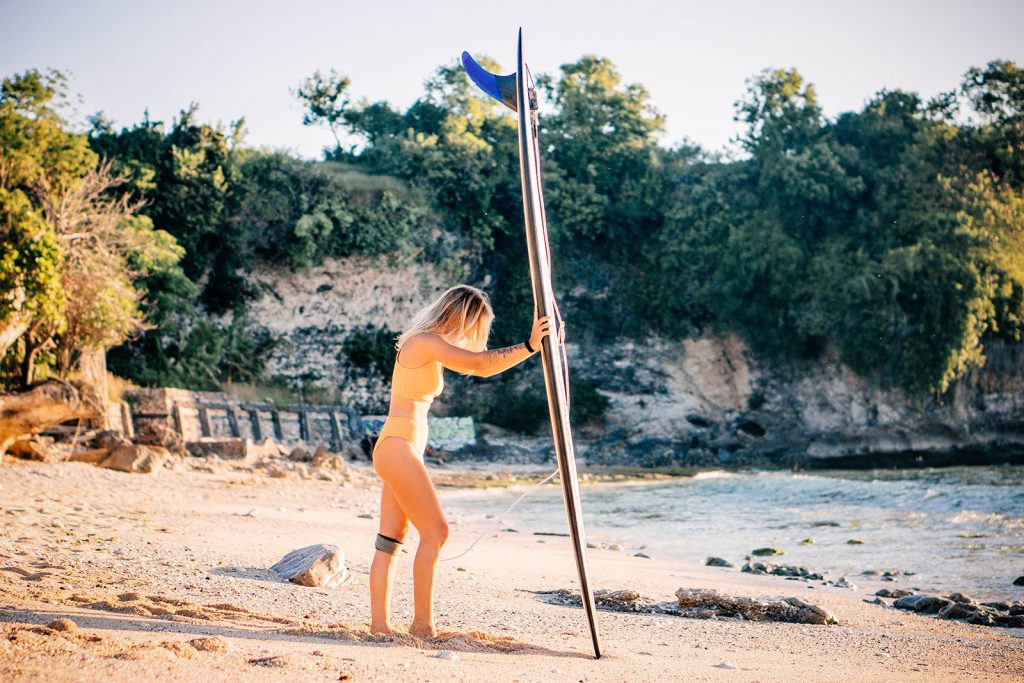
Should you wear the leash on your ankle or your calf?
If you ride a longboard but don’t do any fancy footwork up and down the deck, an ankle leash is the standard. Most surfers agree that ankle leashes are simply more comfortable, especially when paddling. But because the attachment point is so low on the leg, ankle leashes are more prone to entanglement than calf leashes.
Calf leashes create less drag in the water and are less likely to get tangled up in your cross-steps. For some people, though, they’re not the most comfortable to wear and make it a little harder to pull the board back to you.
Final verdict? It all comes down to your surfing style and personal preference. Performance-wise, there’s not much difference between an ankle leash or calf leash when you aren’t noseriding.
Check out my recommendations for the best surfboard leashes here.

